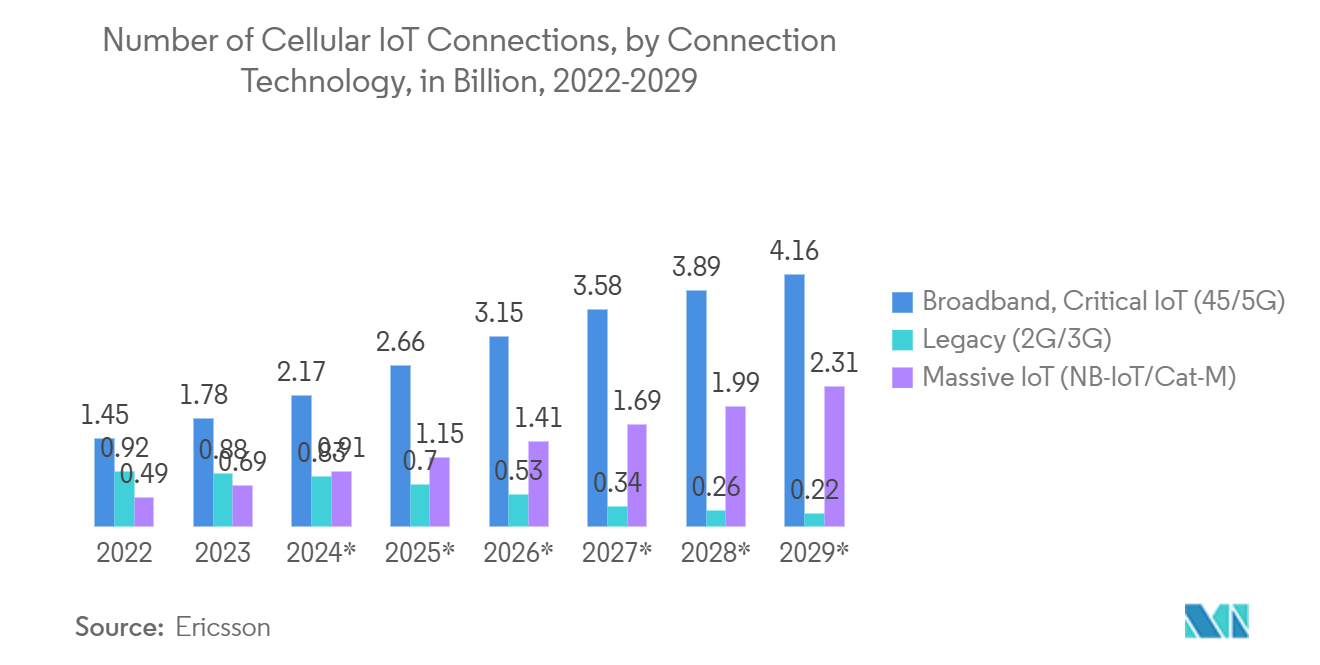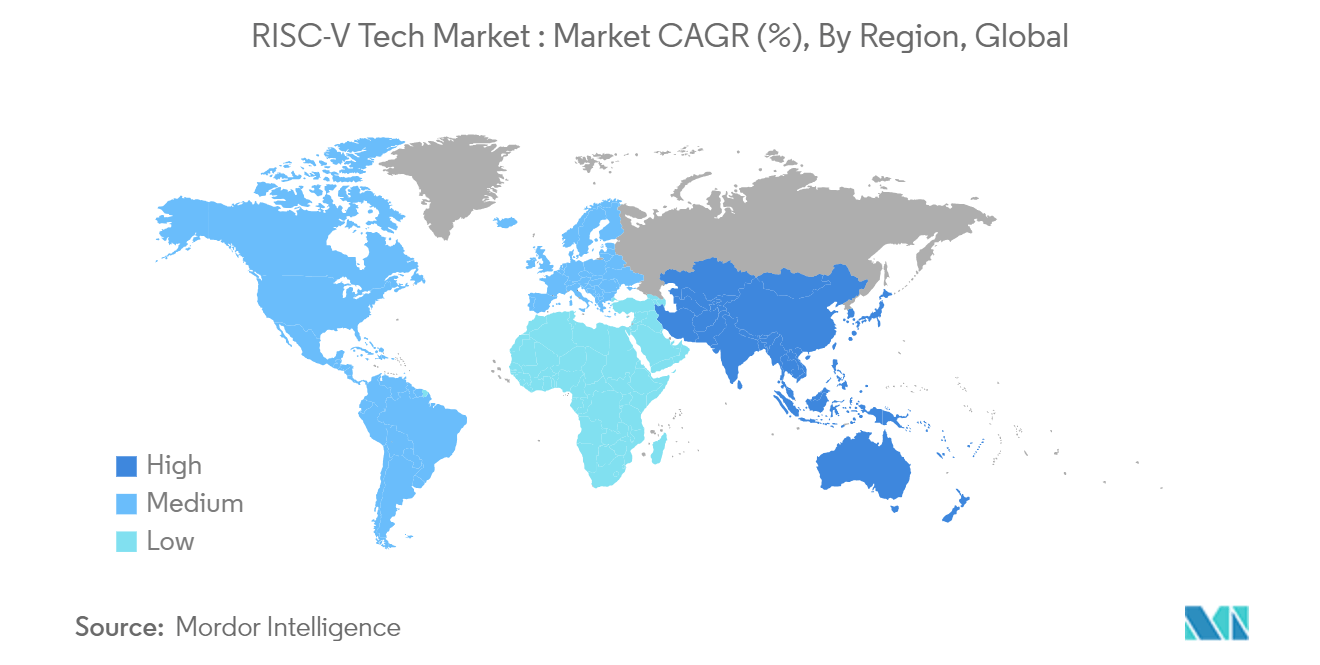Market Trends of RISC-V Tech Industry
IoT Devices Hold Largest Share in the Application Segment of the Market
- One of the primary catalysts for the growing integration of Internet technologies in consumer products is the surge of IoT devices. These devices rely on uninterrupted connectivity to send and receive data, facilitating their smart features and enabling real-time monitoring. Security measures must evolve to safeguard the embedded devices integral to the IoT ecosystem. It's essential to move beyond traditional software-centric cybersecurity and incorporate hardware-based security solutions, such as those offered by RISC-V. By leveraging RISC-V hardware, companies can bolster the security of IoT-connected embedded devices, providing a layer of protection that transcends conventional software cybersecurity.
- RISC-V, an open-source ISA free from licensing fees, is set to enhance security for IoT devices. By removing financial barriers, companies designing SoCs and devices can redirect funds typically spent on pricier ISAs into crucial areas like cybersecurity. Thanks to its lower costs and open-source nature, RISC-V holds a competitive edge, offering the flexibility to implement and evolve the next generation of secure processors for IoT devices.
- Moreover, RISC-V is making significant inroads into the rapidly growing domain of IoT devices. Whether it's smart home gadgets or industrial sensors, these devices demand low power consumption, high efficiency, and robust edge computing capabilities. RISC-V is the prime candidate for these applications thanks to its adaptable architecture. Its inherent scalability empowers developers to craft diverse devices, ranging from basic sensors to sophisticated edge computing units, all anchored on a unified core architecture. This consistency not only streamlines the development process but also shortens the time-to-market, thereby propelling innovation in the ever-evolving IoT landscape.
- Ericsson has reported that cellular IoT connections reached 3.4 billion by the end of 2023, with projections suggesting a rise to nearly 4 billion by the close of 2024. By 2029, it's expected that around 60 percent of these connections will be broadband IoT, primarily through 4G networks. Additionally, Cisco's Annual Internet Report underscores a notable increase in network-connected devices, soaring to almost 30 billion in 2023, up from 18.4 billion in 2018. Significantly, IoT devices made up 50% (or 14.7 billion) of the total networked devices in 2023, marking a substantial jump from 33% (6.1 billion) in 2018. Such remarkable growth trajectories are set to propel the market forward.
- Renesas reports that the global proliferation of IoT edge devices is crucial for linking diverse sensors to the cloud through networks. These IoT edge devices are increasingly adopting 64-bit microprocessors, enabling them to operate on Linux and other high-performance operating systems. Additionally, shifts in import and export regulations have necessitated diverse CPU architecture options for microprocessors, ensuring a consistent supply of IoT devices. These dynamics are poised to spur innovations in the market under study. The growing demand for IoT devices, driven by the increased connectivity, is expected to enhance the market opportunities.

Asia Pacific to Register Major Growth
- AI is increasingly integrated into automotive applications, enhancing autonomous driving, advanced driver assistance systems (ADAS), and in-vehicle infotainment (IVI). Due to the growth of AI-based smart automobiles in the market, AI would be a significant catalyst for RISC-V adoption across various segments in the Asia Pacific region. RISC-V's unique efficiency and scalability make it suitable for developing processors tailored to AI operations.
- India is a rapidly advancing nation in the technology sector. Furthermore, in December 2023, InCore Semiconductors Pvt. Ltd, a semiconductor design firm, highlighted that India contributes 30 to 40 percent of global chip design activities and boasts an even greater share in physical design. The company's official reported that Google LLC has planned to relocate its physical design teams to India, emphasizing that the nation is solidifying its status as a design epicenter, particularly in the RISC-V domain, which would support market growth in the region.
- Policymakers are increasingly concerned that Chinese firms might leverage the RISC-V architecture to sidestep U.S. export controls or to mitigate risks against potential future restrictions. As a result, they are actively seeking methods to regulate China's access to this technology. For example, in April 2024, the U.S. Department of Commerce supported the lawmakers' calls to tighten restrictions on China's use of the RISC-V instruction set architecture (ISA), which can lower the market adoption rate in the Asia Pacific region.
- Semiconductor technology is a national security concern for nearly every country; however, chip manufacturing remains concentrated in just a few nations. According to the U.S. International Trade Administration, India sources 95% of its semiconductors from China, Taiwan, South Korea, and Singapore. As a result, India, along with several other regions, heavily depends on foreign nations for its technological foundation, which creates an opportunity for the indigenous market vendors to develop RISC-V MCU (Micro Controller Unit).
- Additionally, in May 2024, startup Mindgrove Technologies Pvt. Ltd. launched Secure IoT to bolster India's domestic chip presence. This marks the introduction of a high-performance RISC-V MCU, designed and commercialized in India, poised to fuel market growth potential in the Asia Pacific region.
- Therefore, the demand for high-performance computing, the emergence of the digital economy, the governmental support for chip manufacturing, and the existence of a semiconductor manufacturing ecosystem in the Asia Pacific region are fueling the usage of RISC-V technology in chip manufacturing.


